How to Measure Flour
How to measure flour the right way.
Understanding the importance of measuring flour by weight rather than volume is crucial for achieving accurate results in baking. Unlike other ingredients, flour can significantly change the overall structure, texture and quality of your baked goods. This introduction sets the stage for why weight matters when working with flour.
Table of Contents
Bread hydration rate.
Bread bakers often talk about the percent hydration of dough or water, also known as bakers percentage. Hydration is a fancy term that refers to the amount of water in relation to the amount of flour. For example, my focaccia recipe is a high-hydration dough, meaning the ratio of water to flour is higher than most. If you incorrectly measure flour or even water for that matter, it will change the entire structure, quality and crumb of the bread.
How to calculate hydration.
To calculate the hydration rate of a given bread recipe, simply divide the weight of the water by the weight of the flour and multiply by 100. For example, my focaccia recipe uses 550ml water and 500g of flour. 550/500 x 100 = 110% hydration.
Why does hydration rate matter?
Hydration rate gives us insight on texture of the dough before actually working with it.
Low hydration (50%-60%)
Low hydration recipes are typically stiff and not very sticky. Used for dense bread like bagels or traditional European breads. The lower hydration creates a tighter crumb structure on the side and a chewier texture.
Medium hydration (60%-70%)
The dough will be moderately soft and slightly sticky but still manageable. Commonly used for bread like sandwiches or French bread. This hydration level creates a balance between chewy interior and crusty exterior.
High hydration (70%-80%)
The texture of high hydration dough is soft, extensible and very sticky. It will feel wet and tacky but still workable with practice and technique. Used in artisan bread recipes like ciabatta or focaccia. Higher hydration results in a more open crumb structure, with large air pockets and a soft texture.
Very high hydration (80% and above)
This level of hydration is reserved for specialty breads like rustic Italian bread. These breads have an extremely open crumb and a moist, tender structure.
Different types of flour.
Flour is a fundamental ingredient, particularly in baking and cooking. It’s a powdery substance produced by grinding grains, legumes, seeds or roots. The most common type is wheat flour, which is made from milling wheat grains. The process involves removing the outer husk and grinding the inner part into a fine powder. Believe it or not, there are many different types of flour, each with unique properties and characteristics suited for different culinary purposes.
All-purpose flour
Versatile and commonly used for a variety of baked goods. It has a good balance of protein and gluten, making it suitable for many types of recipes.
Bread flour
Higher in protein and gluten, bread flour is ideal for yeast-based bread. It provides structure and elasticity to dough, resulting in a chewier texture.
Cake flour
Cake flour has less protein than all-purpose flour, producing a softer crumb.
Self-rising flour
Contains baking powder and salt, reducing the need for additional leavening agents. It’s convenient for quick breads and biscuits.
Whole-wheat flour
Made from wheat kernels, providing more nutrients and fiber than most flours. It has an overall nuttier flavor and denser texture. It’s often used in whole grain recipes.
Pastry flour
Pastry flour is a mix between all-purpose flour and cake flour in terms of protein content. It’s mainly used for pie crusts, cookies and other delicate pastries.
00 flour
Highly refined and soft. Often labeled as “doppio zero” in Italian, is a finely milled wheat flour. It is much lower protein content compared to bread flour, providing less structure and a more delicate crumb.
Almond flour
Almond flour is made from almonds that are ground and sifted into a fine flour. It is naturally wheat free and gluten free. Without gluten, baked goods made with almond flour tend to be more dense and flat.
Why is the type of flour important in a recipe?
As you read above, different types of flour have varying levels of gluten and protein. Different flour also absorbs liquid differently, affecting the moisture content of the final product. Flour affects the structure, texture and crumb of baked goods. If a recipe calls for bread flour, do your best to use bread flour. There’s a good reason why the author wrote that particular recipe with it.
How to measure flour WITHOUT a scale.
Measuring flour may seem like the most basic kitchen task but you’d be surprised how many people don’t know how to measure the right way.
Fluff up the flour first
Before measuring, fluff the flour in its container with a spoon or fork by gently stirring it. This helps aerate the flour and prevent it from packing down.
Spoon flour into the measuring cup
No, your liquid and dry measuring cups are not interchangeable! Use a spoon to scoop the flour from the container to the dry measuring cup. Be careful not to shake or tap the measuring cup while scooping as this will settle the flour whiling filling, and will lead to an inaccurate measurement.
Level off the flour
After filling the measuring cup, use a flat edge, like the back of a knife, to level off the excess flour by sweeping it across the top of the cup. Make the flour is leveled with the top rim.
Do not tap or shake the cup
Avoid tapping or shaking the cup to compact the flour, as this can lead to too much flour in the recipe.
Measure at eye level
Just as with measuring liquid in a cup, always check the measurement at eye level to ensure the most accuracy.
How to measure flour WITH a scale.
Using a scale provides precise measurements, reducing the chances of over or under measuring ingredients in your recipes. In my recipes, I follow the guideline conversion of 1 cup of flour = 120 grams. I try my best to measure by exact volume for my recipes but my golden rule is no more or less than 3-5 grams of a given ingredient.
Zero out the scale
Place your bowl or container on the scale and set to zero, also known as “tare”.
Weigh the flour
Gentle spoon the flour into the bowl until you reach the desired weight. If the recipe you follow specifies a measurement in cups, check a reliable conversation chart to determine the equivalent weight in grams or ounces.
How can I tell if my flour is expired?
How do you know when flour is past its prime? The expiration date on the package of your flour is the best indicator although most expiration dates are typically “sell by” or “best by” dates and peak condition recommendations.
If you’ve transferred your flour from its original package into a storage container and are wondering if its still good to use, here are a few tips to consider before you throw it out:
Smell it
If your flour has an unpleasant, sour, rancid smell, this could be a sign the naturally occurring oils from the whole grains in flour has oxidized. I probably wouldn’t risk using it.
Touch it
Moisture is flours worst enemy. Flour that was exposed to moisture is clumpy and may even have mold in it. If it has a weird texture, toss it.
Look at it
Is there evidence of bugs or mice droppings directly in the flour? Weevils are common flour invaders. I know this sounds disgusting but this would indicate it’s time to replace your flour.
The best practices for storing flour.
The best way to store flour is in a dry, cool place away from direct sunlight. This helps prevent moisture and pest from affecting the quality of the flour. If you transfer flour into a storage container, make sure to label the container with the purchase date and open date to help you keep track of freshness.
Looking for other Novice to Expert tips?
We have a whole section dedicated to helping you! Check out our other posts From Novice to Expert.
Your feedback is valuable to us. If you have any questions, please let me know in the comments. If you try my recipes and love them, please take a moment to leave a five star review. Thank you for being part of the Bake Cook Repeat community! Don’t forget to follow us on Facebook, Instagram, Pinterest and Subscribe on YouTube.

How to Measure Flour
Patricia Martinescu from Bake Cook RepeatIngredients
- 1 cup all-purpose flour substitute with any type of flour
Instructions
How to measure flour WITH a scale.
- Place your bowl or container on the scale and set to zero, also known as "tare".
- Gentle spoon the flour into the bowl until you reach the desired weight. If the recipe you follow specifies a measurement in cups, check a reliable conversation chart to determine the equivalent weight in grams or ounces. In my recipes, I follow the guideline conversion of 1 cup = 120 grams.
How to measure flour WITHOUT a scale.
- Before measuring, fluff the flour in its container with a spoon or fork by gently stirring it. This helps aerate the flour and prevent it from packing down.
- Use a spoon to scoop the flour from the container to the dry measuring cup. Be careful not to shake or tap the measuring cup while scooping as this will settle the flour whiling filling, and will lead to an inaccurate measurement.
- After filling the measuring cup, use a flat edge, like the back of a knife, to level off the excess flour by sweeping it across the top of the cup. Make the flour is leveled with the top rim.
- Avoid tapping or shaking the cup to compact the flour, as this can lead to too much flour in the recipe.
- Just as with measuring liquid in a cup, always check the measurement at eye level to ensure the most accuracy.
The provided nutritional value above is an estimate per serving. 100% accuracy is not guarenteed. Please see Nutrition Information Disclaimer in our Privacy Policy.
Nutrition Information Disclaimer
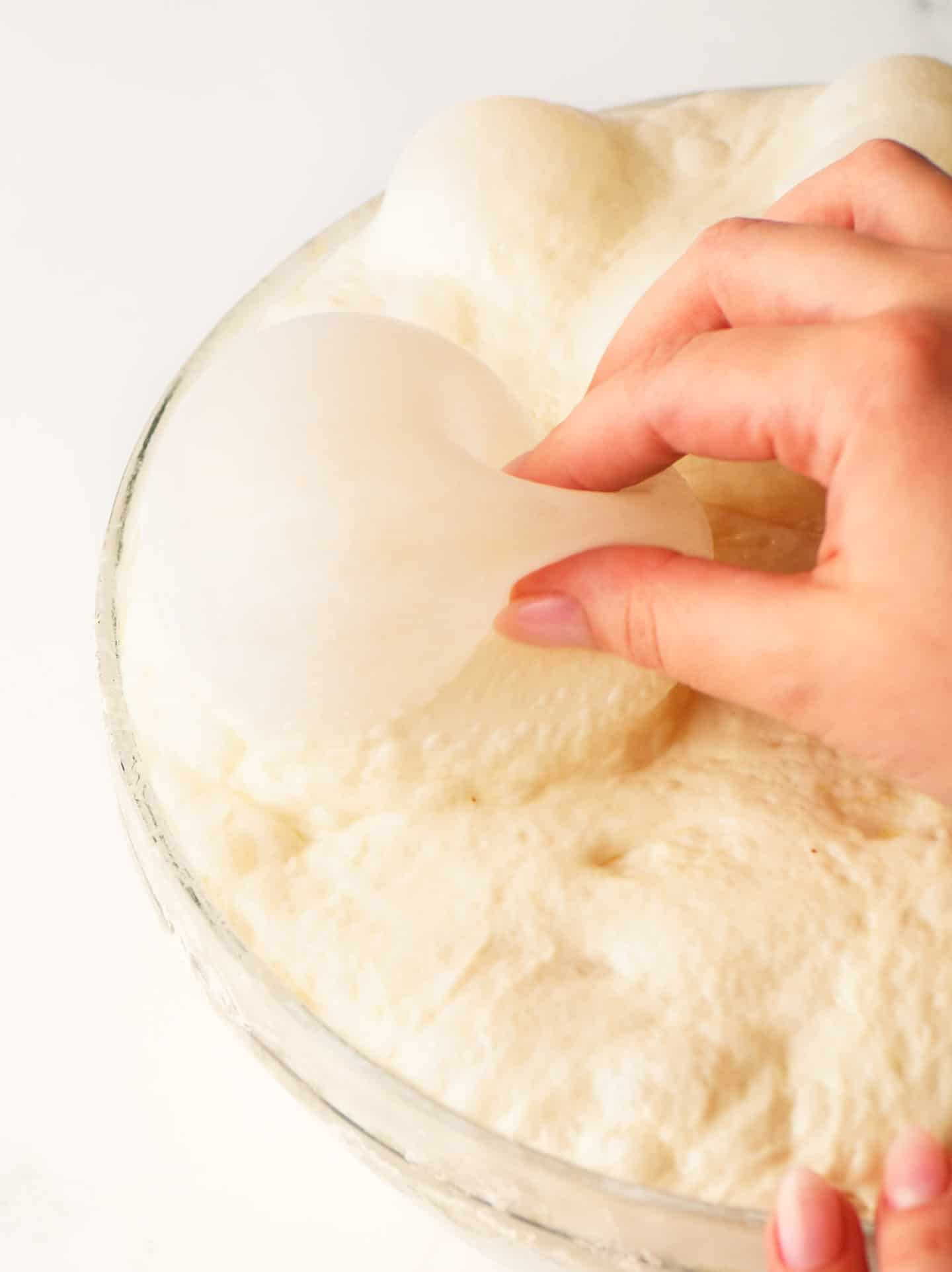

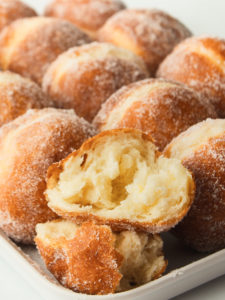
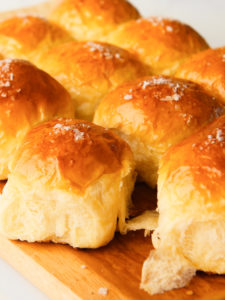

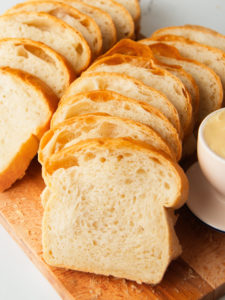
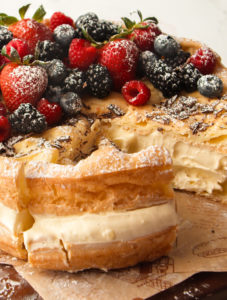
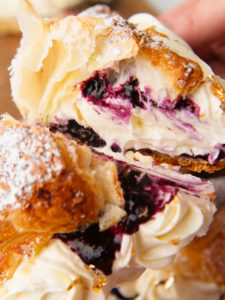
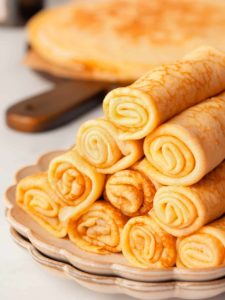
I love this section! I genuinely didn’t understand why some recipes didn’t turn out well and now I do.